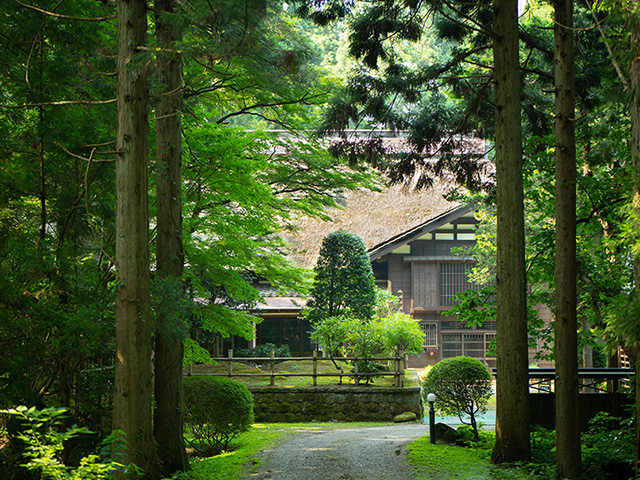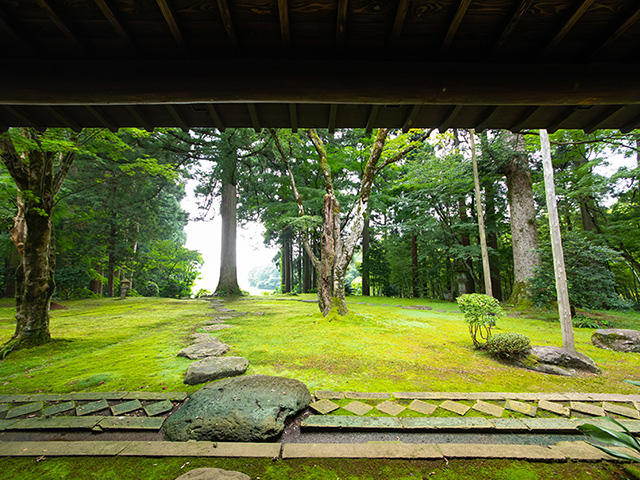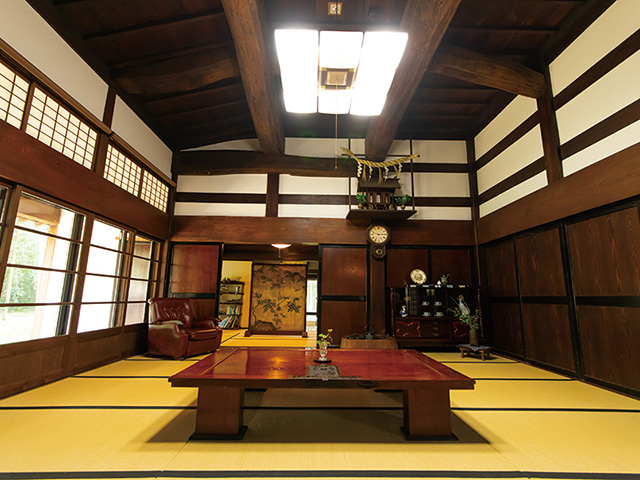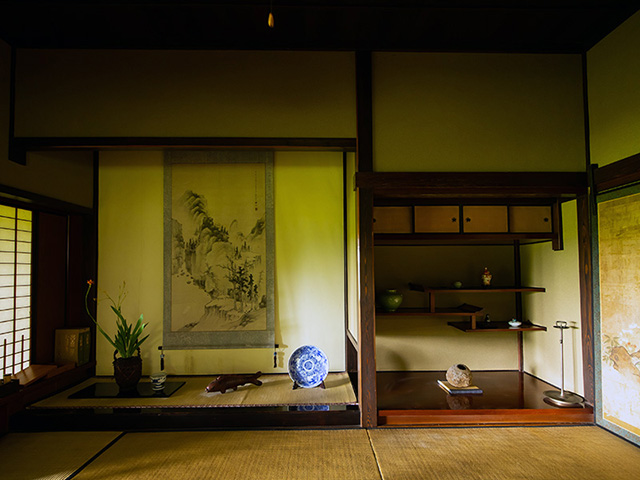
The Tominaga family was established in Kanda Village (currently Kanda, Sanwa Ward) during the Edo period, and is the head family of a prestigious family that served as village headmen until the end of the Edo period. Many families that branched off from the original Tominaga family settled in the Kanda area. The Hayashi-Tominaga family is one of them, and it started when Moriemon Tominaga, who served as the local governor of Oshu Onahama (now Iwaki City), returned to his hometown in 1780 and lived in Kanda Village.
In 1875 (Meiji 8), Moriemon Tominaga, the fourth head of the family, purchased the land that was once the forest of the Takada clan, constructed the current building in 1883 (Meiji 16), and moved into the area. Since the name of this place was ‘Tatehayashi’, the ‘Hayashi’ of ‘Tatehayashi’ was taken as the trade name, and it came to be called Hayashi-Tominaga.

The Hayashi-Tominaga-Tei was designated as a Joetsu City Cultural Property in 2007. Suitable for a mansion designated as a cultural property, it is located in a slightly elevated garden overlooking the countryside. When you pass through the cedar trees at the entrance, you will see a solid thatched roof house with a calm appearance. The south and west sides of the main house are dry landscape gardens covered with cedar moss.

The cedar forest on the west side of the garden is cut open, and use the paddy fields spreading below resemble the “sea”, use Mt. Hokogadake and Gongendake resemble the “sacred mountain”, use overhanging hill resemble the “cape”. It is a borrowed landscape garden.
There are many precious trees and huge trees in the garden, and the cedar is said to be about 500 years old, and the fir tree, weeping cherry tree, and maple tree are said to be 200 to 300 years old.

The zelkova beams, which have a sense of weight and have withstood heavy snowfall, give the farmer’s hall a lively impression. In addition, the sashikamoi that surrounds it is thick enough to be unique to the snow country. The building has remained almost as it was at the time, and the hearth and stove remain in the room as they were, allowing you to imagine the life of that time.

The samurai-style tatami room, with its alcoves, fusuma (sliding doors), long windows, ceilings, etc., has a shoin-zukuri style.
Kano school folding screens and calligraphy by Kaishu Katsu in the inner parlor. In addition, there were exchanges with celebrities and cultural figures such as Tsuyoshi Inukai, Horyu Goseda, and Shu Iwaya. Kaishu Katsu was a master of Zenbei Kawakami, the founder of Iwanohara Vineyard, and also visited Hayashi-Tominaga-Tei.
